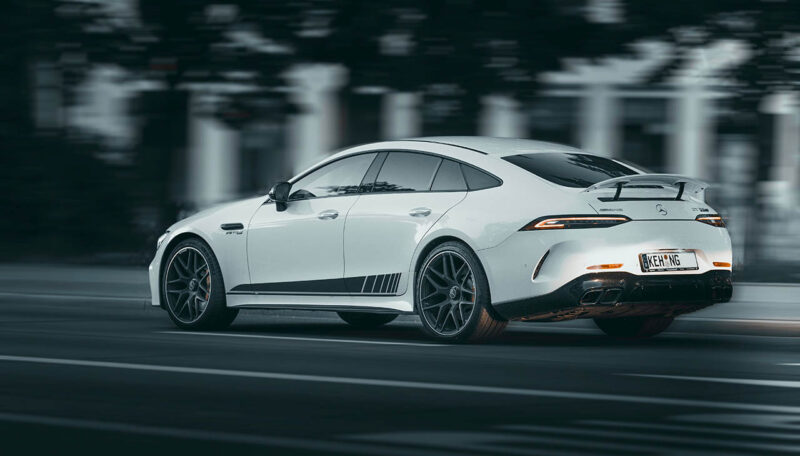As we accelerate into the future, the 2024 auto industry stands on the cusp of a technological revolution that is set to redefine the driving experience. Innovative advancements in automation, connectivity, and electrification are merging to create vehicles that are not only transporters but also smart, responsive companions on the road. This burgeoning era promises more than just incremental updates; we are witnessing a profound transformation in the structural DNA of what we consider the modern automobile. Join us as we explore the latest features and innovations that are reshaping the landscape of personal transportation.
Advanced Safety and Driver Assistance Systems
Adaptive Cruise Control with Lane-Changing Capabilities
One of the standout safety features in the 2024 lineup is adaptive cruise control with lane-changing capabilities. This intelligent system adjusts the vehicle’s speed to maintain a safe distance from the car in front, but it takes automation a step further by carefully executing lane changes. Using a complex array of sensors and cameras, the vehicle can identify the optimal moment to switch lanes, signal accordingly, and perform the maneuver, all while the driver’s hands remain on the wheel, ready to intervene if necessary.
Augmented Reality Heads-Up Displays for Enhanced Visibility
Augmented reality (AR) has leapt from the realm of gaming into the automotive industry with the introduction of AR heads-up displays. This futuristic feature projects vital information directly onto the windshield, overlaying navigational cues onto the real road ahead. Drivers can benefit from seeing turn-by-turn directions and real-time data like speed and fuel levels without averting their eyes from the road, significantly improving safety and convenience.
AI-Powered Predictive Collision Warning Systems
Artificial intelligence (AI) has transformed the capabilities of driver assistance technologies. The latest development is predictive collision warning systems that harness AI to analyze traffic patterns, vehicle behavior, and road conditions. These systems can warn drivers of potential hazards before they become imminent threats, providing precious additional seconds to react. Through continuous learning, these systems become increasingly adept at detecting and responding to diverse driving scenarios.
Electric and Autonomous Driving Innovations
Next-Generation Electric Vehicle Platforms with Extended Range
The quest for sustainability has led to significant breakthroughs in electric vehicle (EV) technology, and 2024’s models are no exception. Next-generation electric platforms boast extended range capabilities, ensuring that drivers can travel longer distances on a single charge. Engineers have achieved this by optimizing battery chemistry, employing lighter materials, and refining aerodynamics. Car buyers now have the freedom to embark on extended journeys, making EVs a more practical and enticing option than ever before.
Integration of LiDAR and Advanced Sensor Technology for Autonomous Driving
With autonomous vehicles on the horizon, the integration of Light Detection and Ranging (LiDAR) systems, alongside an advanced sensor suite, is a pivotal development. These technologies work in concert to create detailed, high-resolution maps of the vehicle’s surroundings, providing the necessary information for safe and efficient autonomous navigation. The accuracy of LiDAR, combined with radar and camera data, enables the autonomous systems to detect obstacles, navigate complex environments, and make split-second decisions that mimic, or even surpass, human reflexes.
Seamless Connectivity for Over-the-Air Updates and Vehicle-to-Infrastructure Communication
Connectivity is at the heart of the modern vehicle’s evolution. In 2024, cars are not only connected to the internet but also to each other and the road infrastructure. Over-the-air (OTA) updates allow manufacturers to remotely upgrade vehicle software, ensuring that drivers benefit from the latest features and security patches without visiting a dealership. Meanwhile, vehicle-to-infrastructure (V2I) communication is set to revolutionize traffic flow and safety, with vehicles communicating directly with traffic signals, road signs, and even the road itself to optimize driving conditions and reduce congestion.
Sustainable Materials and Eco-Friendly Technologies
Sustainable Interior Materials: Recycled Plastics and Vegan Leather
A pivotal shift within the 2024 auto industry is the incorporation of sustainable interior materials such as recycled plastics and vegan leather. Manufacturers are sourcing high-quality, eco-friendly materials to craft interiors that are both luxurious and environmentally responsible. Recycled plastics are being transformed into robust and stylish fittings, while vegan leather offers an animal-free alternative that does not compromise on comfort or aesthetic appeal. These sustainable options reduce waste and lower the environmental impact, aligning with the values of an eco-conscious consumer base.
Hydrogen Fuel Cell Technology: The Zero-Emission Promise
Hydrogen fuel cell technology is carving out its niche as a clean energy frontrunner in the zero-emission vehicle sector. Unlike conventional combustion engines or even battery-electric vehicles, fuel cell cars generate power by combining hydrogen with oxygen, with water vapor as the only byproduct. The 2024 model year has seen advancements in this technology, including higher efficiency fuel cells and increased hydrogen storage capacity, promising longer ranges and swift refueling times, thereby charting a practical route toward sustainable mobility.
Integration of Solar Roof Panels: Supplementary Power Generation
Another innovative feature that underscores the 2024 auto industry’s commitment to sustainability is the integration of solar roof panels. Engineered to capture and convert sunlight into electrical energy, these panels supplement the vehicle’s primary power source, whether it’s charging the battery in electric vehicles (EVs) or powering ancillary systems in traditional cars. This harnessing of renewable energy reduces reliance on the electrical grid, extends the range of EVs, and contributes to the overall reduction of the vehicle’s carbon footprint.
